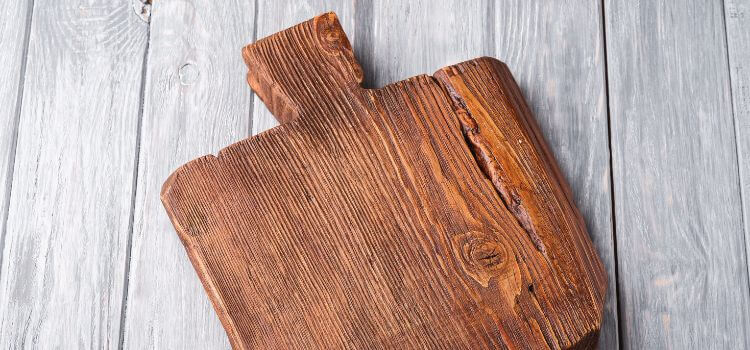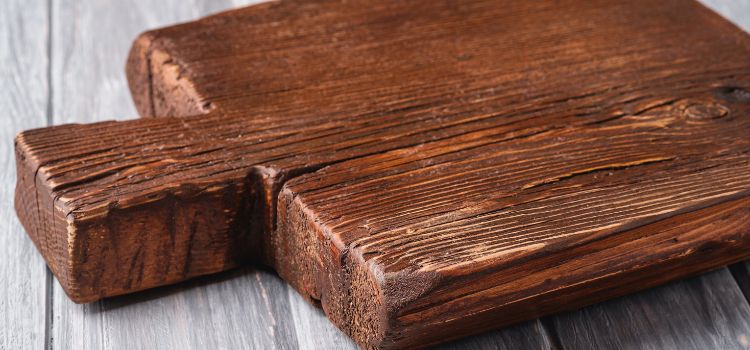As an Amazon Associate, I earn from qualifying purchases

In the realm of kitchen essentials, cutting boards stand as vital tools, playing a significant role in food preparation. The choice of wood for these boards is not just a matter of aesthetics but also of functionality and longevity. Among the myriad of woods available, red oak is frequently considered due to its widespread use in furniture and flooring. But how does it fare as a material for cutting boards? This article explores the qualities of red oak, assessing its suitability for such a task.
Red oak is well-known for its strength and durability. With a hard and dense structure, it is a popular choice in the woodworking industry, particularly for flooring and cabinetry. Its appealing reddish hue and intricate grain patterns make it a favorite for those seeking both functionality and beauty. However, when it comes to cutting boards, the question remains: does red oak meet the necessary criteria?
Benefits of Using Red Oak for Cutting Boards
- Durability: Red oak is remarkably strong and can withstand significant wear and tear, making it ideal for cutting boards that are frequently exposed to knives and kitchen tools. Its density provides a robust surface for heavy chopping and regular use without quick deterioration.
- Affordability: Red oak is widely available in the market, ensuring it remains an affordable option for quality wood. This abundance means that if a cutting board needs replacement, finding another piece of red oak is easy and cost-effective.
- Aesthetic Appeal: With its rich grain patterns and reddish tones, red oak adds a warm and inviting look to any kitchen. Its natural beauty complements various interior designs, making it a visually appealing choice for those who value style in their kitchen tools.
Potential Drawbacks
- Porosity: Red oak is more porous than many hardwoods, leading to increased moisture absorption. This can result in warping or bacterial growth if not properly maintained and sealed.
- Knife Edge Impact: While red oak’s density enhances durability, it can dull knives faster than softer woods. This means that those who prioritize sharp edges may need to sharpen their knives more frequently.
- Weight: The density of red oak makes it heavier than many other woods, which can make handling and moving the cutting board more cumbersome, especially for users who need to store it after use.
Comparison with Other Popular Woods
When comparing red oak to other woods commonly used for cutting boards, several distinctions arise. Maple, for instance, is a popular choice due to its balance of hardness and low porosity. It is less likely to absorb moisture than red oak, making it a more sanitary option. However, maple can be more expensive and might not have the same rich grain patterns.
Walnut offers a darker, more luxurious appearance and is slightly softer than red oak, which can be gentler on knives. However, walnut requires regular maintenance to keep its rich color and is generally more costly. Its weight can also be comparable to red oak, posing similar handling issues.
Cherry wood brings a beautiful reddish-brown tone and moderate hardness. While cherry is softer than red oak and more prone to scratching, its aesthetic appeal and ease of maintenance make it a favorite for those looking for a balance between beauty and function.
Tips for Maintaining Red Oak Cutting Boards

Proper care is essential for maintaining a red oak cutting board’s longevity and performance. Regular cleaning is crucial to prevent bacterial growth due to the wood’s porosity. After each use, the board should be washed with gentle soap and warm water, ensuring it is not soaked, which can lead to warping.
Oiling the red oak board regularly is another vital step. Using a food-safe mineral oil or a specialized wood conditioner helps create a moisture barrier, reducing the risk of absorption. Oiling should be done at least once a month, or more frequently if the board is used often.
To prevent warping and cracking, it’s important to minimize the board’s exposure to excessive moisture and temperature fluctuations. Storing the board in a cool, dry place, away from direct sunlight or heat sources, can significantly extend its life. Additionally, using protective mats or pads during storage can prevent surface scratches.
How to Decide if Red Oak is the Right Choice for You
Deciding whether red oak is the right material for your cutting board depends on several factors. First, consider your cooking habits. If you engage in heavy chopping or use large knives frequently, red oak’s durability might be beneficial. However, if knife maintenance is a top priority, you may prefer a softer wood.
Next, assess your aesthetic preferences. If you are drawn to rich grain patterns and warm tones, red oak’s appearance may suit your style. However, if you prefer a lighter or more uniform wood, other options like maple might be more appealing.
Budget is another crucial consideration. Red oak offers a more affordable alternative to some premium hardwoods, but it also demands more maintenance due to its porosity. Weighing the initial cost against the potential upkeep requirements will help determine if red oak is a practical choice for your needs.
Conclusion
In conclusion, red oak cutting boards provide a durable, aesthetically pleasing option for those looking for a robust kitchen tool. While they may require more maintenance due to their porosity and have an impact on knife sharpness, their strength and visual appeal can make them a worthwhile investment.
Ultimately, the choice to use red oak for a cutting board depends on personal priorities and kitchen usage patterns. For those who value durability and beauty at a reasonable price, red oak may be a fitting choice. With diligent care and maintenance, a red oak cutting board can serve as a reliable and attractive component of your culinary toolkit.
FAQ
Can I use red oak for cutting board?
Yes, red oak can be used for cutting boards, but its high porosity makes it susceptible to moisture absorption and bacterial growth. Regular sealing and maintenance are required to keep it sanitary. Its hardness ensures durability, but it might dull knives faster than softer woods.
Why not use oak for cutting boards?
Oak is not ideal for cutting boards due to its porous nature, which can harbor bacteria and absorb moisture, leading to warping. While durable, its hardness may wear down knife edges quickly. Proper care, including frequent sealing, is necessary to maintain its usability and safety.
What wood should not be used for cutting boards?
Avoid using softwoods like pine and cedar for cutting boards. These woods are too soft, prone to deep cuts, and can harbor bacteria due to their high porosity. Additionally, their resinous nature can impart unwanted flavors and odors to food, making them unsuitable for kitchen use.
How do you seal a red oak cutting board?
To seal a red oak cutting board, apply a food-safe mineral oil or cutting board conditioner. Spread a generous layer over the surface and let it soak in for several hours or overnight. Wipe off excess oil and repeat monthly to maintain a protective barrier against moisture.
As an Amazon Associate, I earn from qualifying purchases